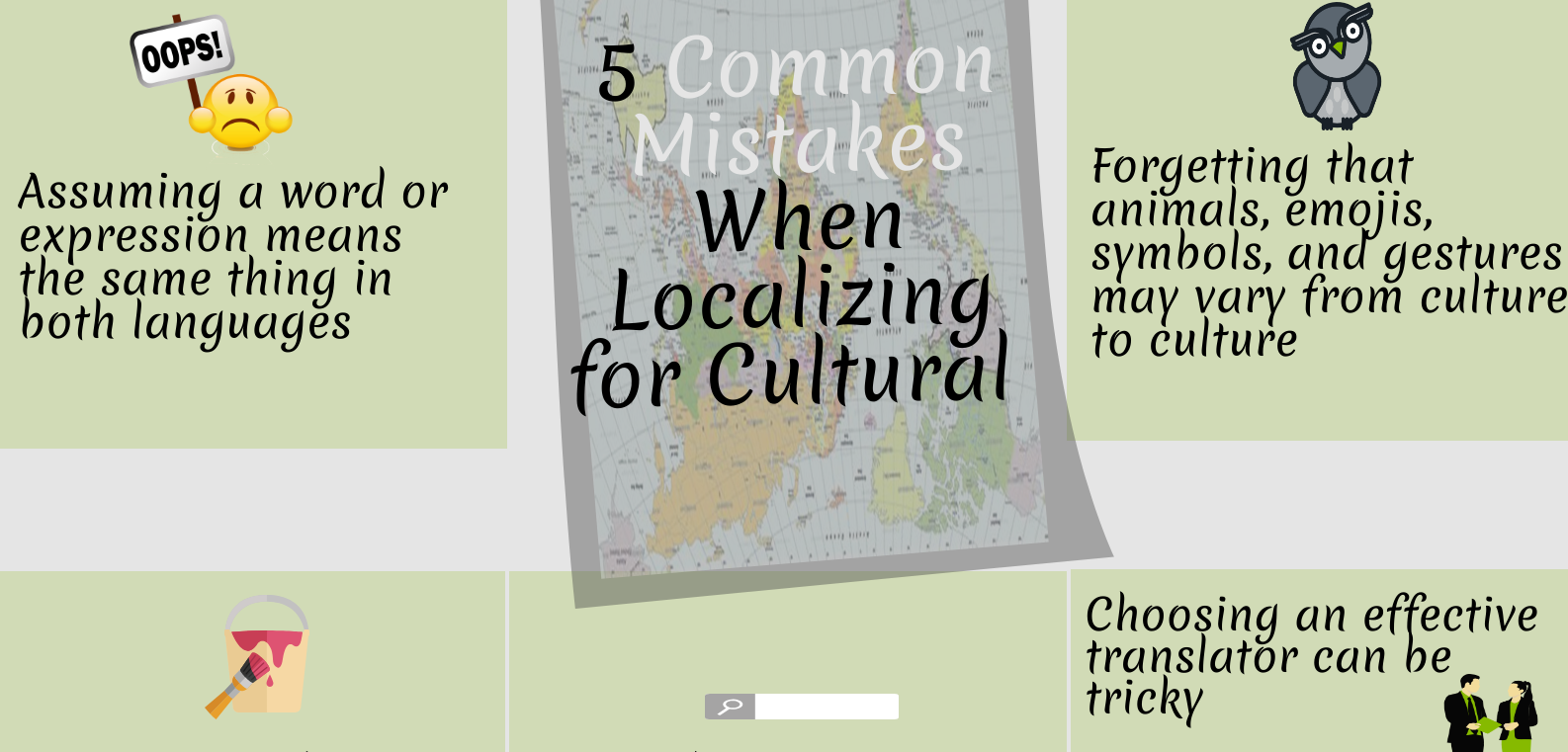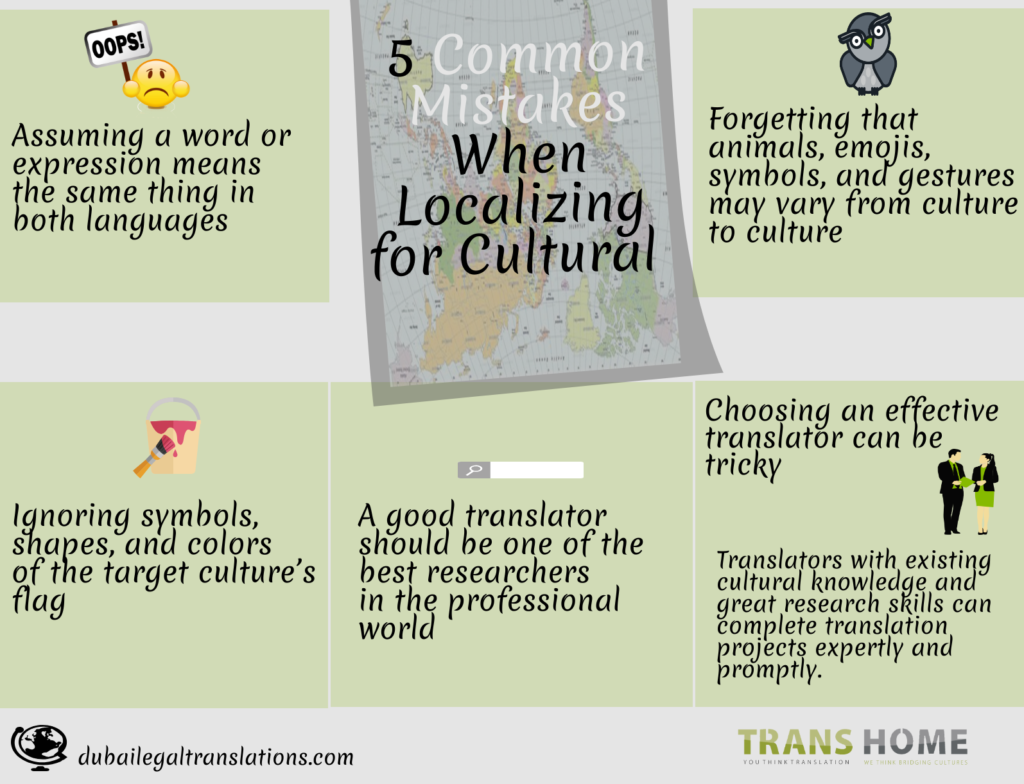
5 Common Mistakes When Localizing for Cultural

1. Assuming a word or expression means the same thing in both languages
Beware of words that may sound similar in both languages. For example, while “tίmida” in Spanish can mean timid, “embarazada” does not mean embarrassed. Even if a translator is almost certain of a word’s linguistic or cultural meaning, they should look it up.
2. Forgetting that animals, emojis, symbols, and gestures may vary from culture to culture
Much like the care a translator needs to use with words, they should be especially careful when using images, animals or colors to convey emotions. Including an image of a dog to convey a brand will be looked at very differently in China versus in the Middle East.
3. Ignoring symbols, shapes, and colors of the target culture’s flag
A nation, state, province, city or even a small town will value its flag and all the meanings it portrays very highly. Knowing about a culture’s flag gives a translator good insight into a group’s shared values and principles.
4. A good translator should be one of the best researchers in the professional world
To ensure that the new content (copy, audio or images) is accurately tailored to a particular culture, translators have to do extensive research. This task includes analyzing online or offline customer behavior, local market trends, behaviors and ideas, societal rules, and traditions.
5. Choosing an effective translator can be tricky
Professional translators are expected to put in a good amount of time to develop existing cultural knowledge. Translators with existing cultural knowledge and great research skills can complete translation projects expertly and promptly.
Leave a Reply